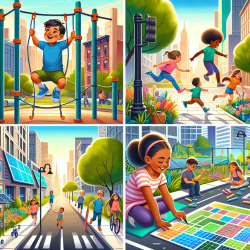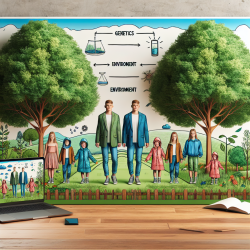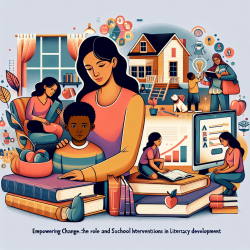Introduction
In today's rapidly urbanizing world, the influence of neighborhood built environments on children's outdoor free play is a critical area of study. A recent systematic review titled Influence of Neighborhood Built Environments on the Outdoor Free Play of Young Children: a Systematic, Mixed-Studies Review and Thematic Synthesis provides comprehensive insights into how urban and suburban environments impact children's play. This blog explores the key findings of this research and offers practical recommendations for practitioners seeking to enhance outdoor play opportunities for young children.
Key Findings
The review synthesized evidence from 53 studies, encompassing diverse cultural and geographic contexts. Three primary themes emerged as influential in shaping outdoor play:
- Availability of Play Spaces: Proximity to parks, playgrounds, and informal play areas significantly supports outdoor play. Children benefit from having accessible spaces that encourage spontaneous and unstructured play.
- Accessibility and Routes: Safe and engaging routes to play areas are crucial. Features such as pedestrian-friendly pathways, traffic-calming measures, and green corridors enhance accessibility and encourage more frequent use of play spaces.
- Social Environment: The neighborhood's social context, including family and community interactions, influences perceptions of safety and the use of play spaces. Trust in neighbors and opportunities for social connections support outdoor play.
Implications for Practitioners
Practitioners can leverage these findings to improve outdoor play opportunities for children. Here are some actionable steps:
- Advocate for Play-Friendly Urban Design: Engage with urban planners and policymakers to prioritize the development of accessible and safe play spaces within neighborhoods. Highlight the importance of integrating natural elements and diverse play equipment.
- Enhance Community Engagement: Foster community initiatives that promote social cohesion and trust among residents. Encourage neighborhood events and activities that bring families together and create a supportive environment for outdoor play.
- Educate Parents and Caregivers: Provide resources and workshops to educate parents about the benefits of outdoor play and how to utilize neighborhood spaces effectively. Address safety concerns and emphasize the importance of allowing children to explore and interact with their environment.
Conclusion
Understanding the interplay between built environments and children's outdoor play is essential for creating supportive and inclusive urban spaces. By focusing on availability, accessibility, and social factors, practitioners can contribute to healthier and more vibrant communities. For those interested in delving deeper into the research, the original study offers a wealth of data and insights.
To read the original research paper, please follow this link: Influence of Neighborhood Built Environments on the Outdoor Free Play of Young Children: a Systematic, Mixed-Studies Review and Thematic Synthesis.










